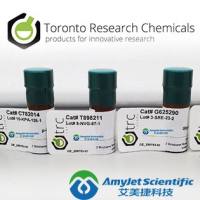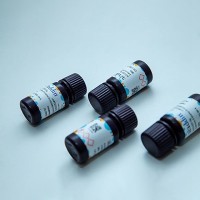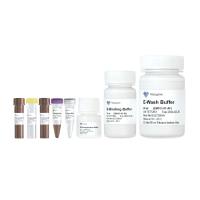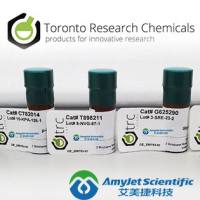Bisulfite Modification of DNA
互联网
Source: Protocol Online Abstract: Modifying DNA using sodium bisulfite to convert unmethylated cytosines to uracils and subsequently detect methylated cytosines using methylation specific PCR (MSP) technique or bisulfite genomic sequencing after PCR amplification with or without cloning. This protocol also describes procedure for handling nanogram quantities of DNA.
Materials and Regents
Prepare immediately before use
10 mM hydroquinone (Sigma; #H 9003)
40.5% sodium bisulfite (Sigma; #S 8890, 8.1 g/20 ml ), dissolve 8.1 g sodium bisulfite in 17 ml cold water, adjust pH to 5.0 with 10 N NaOH, add water to bring volume 20 ml)
Dissolve above solutions by gently inverting with a minimum amount of mixing. Keep solutions cold and in the dark as much as possible.
Procedure
1.Digest 2-5 µg of high-molecular-weight genomic DNA overnight with a restriction enzyme that does not digest the DNA within the region of interest.
2.Extract the DNA with phenol:chloroform:isoamyl alcohol (PCI; 25:24:1), precipitate with 1/10 volume 5 M ammonium acetate and 2 volumes ethanol at -85℃ for 15 min. Centrifuge (14,000 rev/min) at room temperature, remove the supernatant and wash the pellet twice with 70% ethanol. Dry the pellet and resuspend in 100 µl TE (10 mM Tris-HCl, pH7.5, 1 mM EDTA).
3.Denature the DNA by adding freshly prepared NaOH (3 M) to a final concentration of 0.3 M. Incubate at 42℃ for 30 min.
4.To a siliconized microcentrifuge tube add:
1020 µl 40.5% sodium bisulfite
60 µl 10 mM hydroquinone
110 µl DNA (+ NaOH)
10 µl water
5.Gently mix and overlay with mineral oil. Cover the tube with aluminum foil to shield from the light.
6.Incubate at 55℃ for 16-18 h.
7.Purify DNA using the Geneclean II kit (Intermountain Scientific Corporation) or any other methods of your choice.
8.After purification, resuspend DNA and add TE to a final volume of 100 µl.
9.Denature the sample with freshly prepared NaOH (as above) and incubate at 37℃ for 15 min.
10.Neutralize by adding ammonium acetate (pH 7.0) to 3 M.
11.Precipitate the DNA with three volumes of ethanol, centrifuge for 10 min (14,000 rev/min) at room temperature, wash twice with 70% ethanol and dry under a vacuum. Resuspend in 50 µl TE, and store at -20℃ wrapped in foil. Treated DNA should be used within one month as degradation may occur in the cleaned and frozen sample.
Bisulfite modification for nanogram quantities of DNA
For modifications of smaller quantities of DNA such as DNA from microdissected tissues. The basic changes that is made to the above protocol include the method of extraction and the addition of mussel glycogen to precipitations.
The steps are the same as above and only changes are noted.
1.In Step 4, the bisulfite reaction is scaled down to accommodate the smaller volume of DNA:
255 µl sodium bisulfate
15 µl hydroquinone
27.5 µl DNA (+ NaOH)
2.5 µl water
2.In Step 8, TE is added to a final volume of 25 µl.
3.In Step 11, the precipitation is performed in the presence of 40 µg mussel glycogen at -80℃ for 30 min, followed by centrifugation (14,000 rev/min) at room temperature for 30 min. The DNA is resuspended in 25 µl TE.
Note
1.It is important that the DNA is completely denatured prior to and in the presence of the bisulfite solution or the modification will not be complete.
2.To ensure complete denaturation, no more than 5 µg (or less) of starting material (DNA) should be used
3.The initial alkaline denaturation should be at 42℃ for 30 min.
4.The DNA digestion with restriction enzymes can be omitted.
Reference
1.Tremblay, KD. 1998 Technical Tips Online.
2.Clark, SJ et al. Nucleic Acids Res 1994;22: 1827.
3.Li, LC and Dahiya, R. Bioinformatics, 2002; 18(11):1427.








